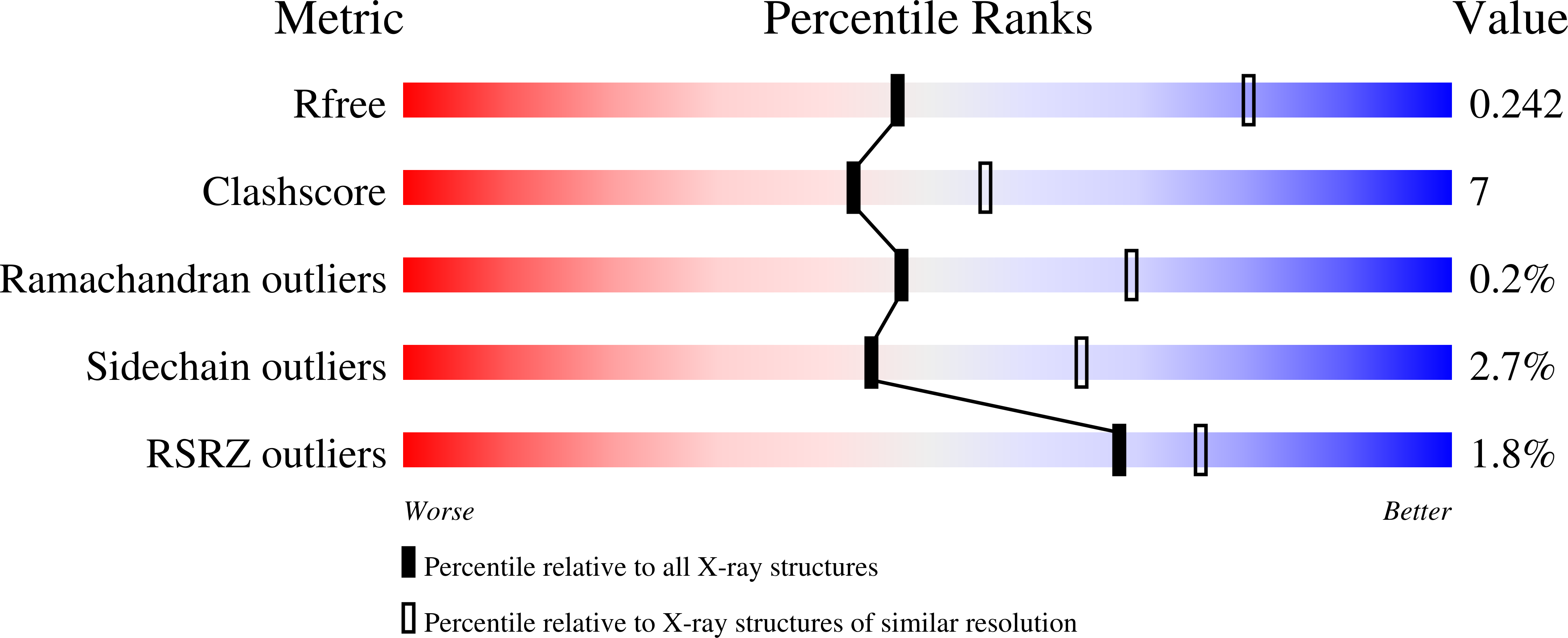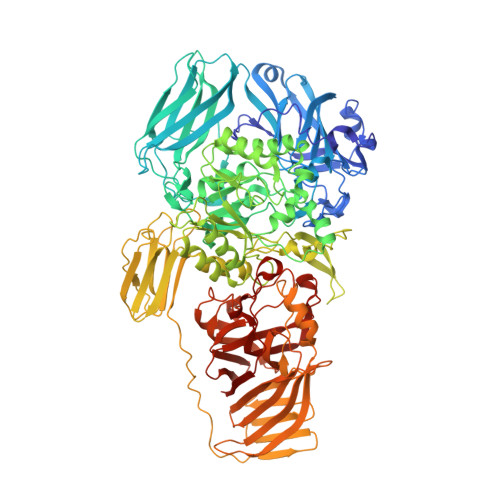Structural basis of specificity in tetrameric Kluyveromyces lactis beta-galactosidase.
Pereira-Rodriguez, A., Fernandez-Leiro, R., Gonzalez-Siso, M.I., Cerdan, M.E., Becerra, M., Sanz-Aparicio, J.(2012) J Struct Biol 177: 392-401
- PubMed: 22193516
- DOI: https://doi.org/10.1016/j.jsb.2011.11.031
- Primary Citation of Related Structures:
3OB8, 3OBA - PubMed Abstract:
β-Galactosidase or lactase is a very important enzyme in the food industry, being that from the yeast Kluyveromyces lactis the most widely used. Here we report its three-dimensional structure both in the free state and complexed with the product galactose. The monomer folds into five domains in a pattern conserved with the prokaryote enzymes of the GH2 family, although two long insertions in domains 2 and 3 are unique and related to oligomerization and specificity. The tetrameric enzyme is a dimer of dimers, with higher dissociation energy for the dimers than for its assembly. Two active centers are located at the interface within each dimer in a narrow channel. The insertion at domain 3 protrudes into this channel and makes putative links with the aglycone moiety of docked lactose. In spite of common structural features related to function, the determinants of the reaction mechanism proposed for Escherichia coli β-galactosidase are not found in the active site of the K. lactis enzyme. This is the first X-ray crystal structure for a β-galactosidase used in food processing.
Organizational Affiliation:
Departamento de Bioloxía Celular e Molecular, Facultade de Ciencias, Universidade da Coruña, Campus da Zapateira s/n, 15071-A Coruña, Spain. apereira@udc.es
















